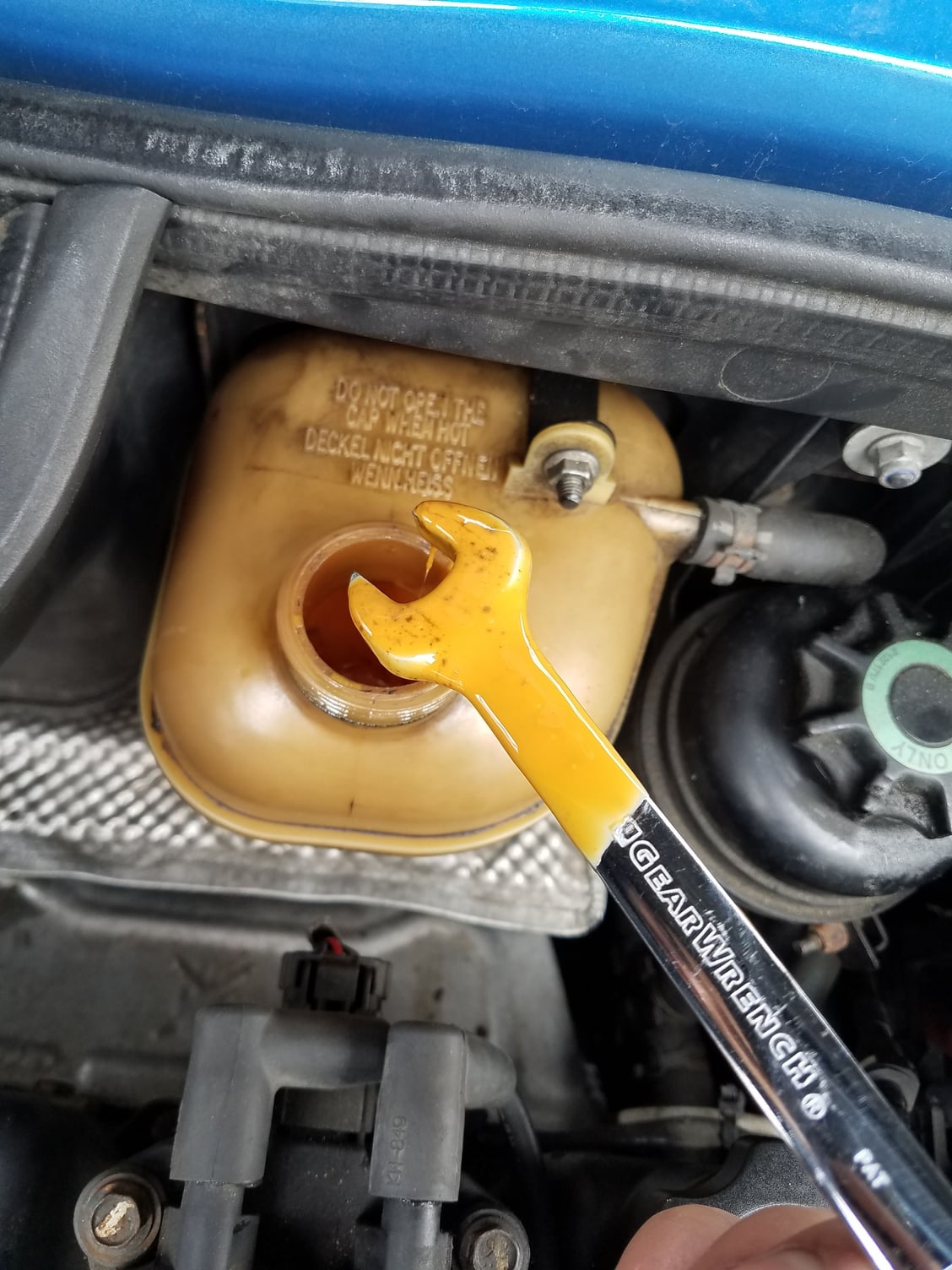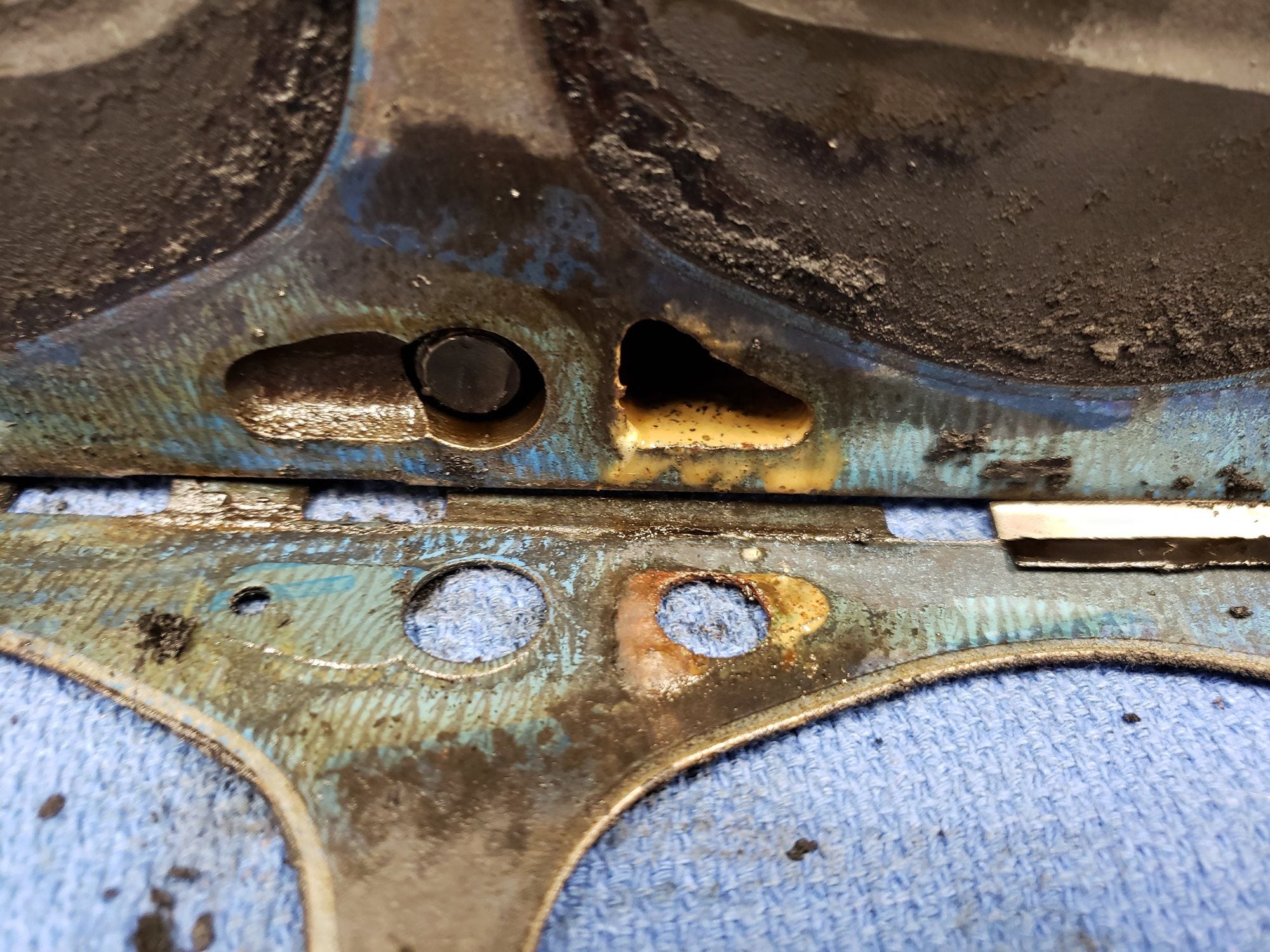
- #Oil in coolant ford 6.0 how to#
- #Oil in coolant ford 6.0 cracked#
- #Oil in coolant ford 6.0 install#
- #Oil in coolant ford 6.0 crack#
#Oil in coolant ford 6.0 install#
Install 45° Brass Fitting and Hose Adapter

Make sure to not over-tighten the bolts as it may cause the adapter to warp or crack. Make sure the surface is clean, and then install the XDP oil cooler flush adapter plate with the supplied O-ring (re-using the factory T30 Torx bolts). With the intercooler pipe set aside, remove the rear coolant manifold cover from the oil cooler housing by removing the two T30 Torx head bolts. While the cooling system is draining you can begin taking off the passenger side intercooler pipe for improved access. Next, remove the lower radiator hose (radiator side) and let it hang over the bucket. Loosen the drain petcock and allow the coolant to drain from the system. With the engine cool, begin by placing a large drain pan/bucket below the radiator. The first step is to drain the cooling system completely.
#Oil in coolant ford 6.0 how to#
Follow the steps below as we demonstrate how to flush the coolant on a 2003 Ford 6.0L Powerstroke. Rather than replacing the oil cooler each time debris accumulates, the XDP 6.0L Oil Cooler Flush Adapter XD397 gives you a quick and easy way to eliminate issues like high engine oil temperatures and help prevent EGR cooler failure. The 2003-2007 Ford 6.0L Powerstroke oil cooler is prone to blocked cooling passages from leftover casting sand and other debris. You may notice that your fuel economy has become less efficient and the car handles roughly while idling.Installations, Powerstroke Oil Cooler Flush – Ford 6.0L Powerstroke If the cracks are located in the part of the engine where the combustion process happens, then it may lose power. This happens because passes through the cracks in the engine block rather than through the exhaust system.


In addition, you may see white smoke coming from the engine. Since the engine is leaking coolant or antifreeze, it may start to overheat since there are not enough of these essential liquids circulating to cool it down. The coolant and oil dripping from the engine onto the ground.
#Oil in coolant ford 6.0 cracked#
Hence, it can be very difficult to detect a cracked engine block until the problem has become very serious. If the cracks are internal, on the other hand, you will see oil in antifreeze since the channels where these two fluids pass through has become damaged. If the cracks are external, then motor oil and coolant will start to leak and mix. Once an engine block has started to crack, the process is nearly impossible to stop and the cracks will quickly get bigger. If the engine freezes, the antifreeze expands, which can cause the engine block to crack.Īs a result of these stresses, the engine block suffers from huge stresses in various areas. If the engine overheats, it can cause cylinder heads to warp and, eventually, crack. The engine block is subject to powerful stress during the car’s normal operation due to the temperature extremes it experiences. It is made of a solid piece of metal, usually cast iron or an aluminum alloy. These include the cylinders where combustion takes place, as well as the channels through which oil and coolant pass to get to the engine. The engine block is where many important components in the running of the engine are found.
#Oil in coolant ford 6.0 crack#
If you see this, the crack is severe and needs to be repaired as soon as possible. The reason is that the cracked head allows exhaust gases to enter the cylinder. Less frequently, you may see smoke in the engine. The problem may even become so severe that your engine may often quit and need to be constantly restarted. This is because the compression process is no longer being performed optimally. This is in addition to finding leaked oil in the coolant.Ĭracked cylinder heads will also cause your engine’s performance to decline. Also, since there is coolant around the cylinder heads to keep them cool, your coolant levels may drop. The caps open and close thousands of times per minute.Īfter several years, the heads are at high risk of cracking.

They also open to vent the exhaust gases the process produces. These cylinders have caps or heads that contain the gas-air mixture and the combustion process. Internal combustion engines contain cylinders where air and gas mix to spark combustion.


 0 kommentar(er)
0 kommentar(er)
